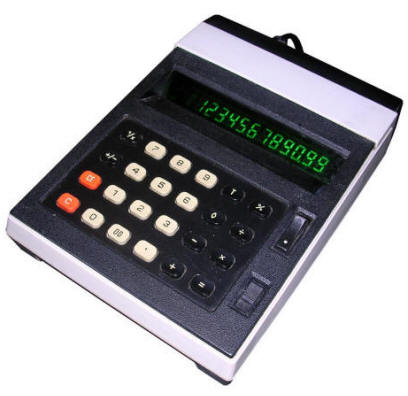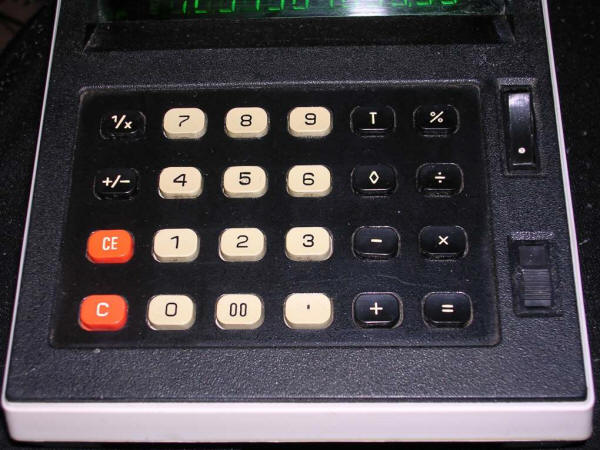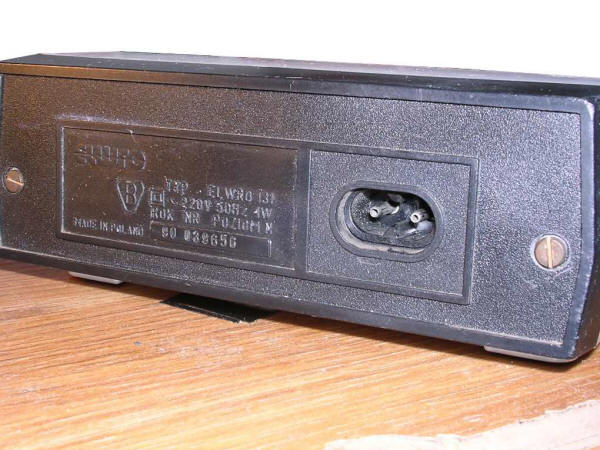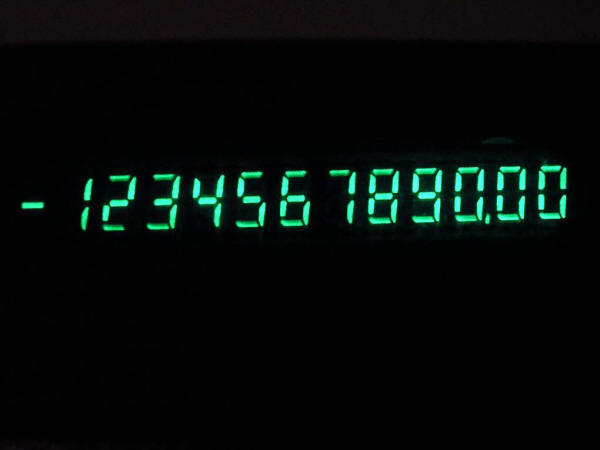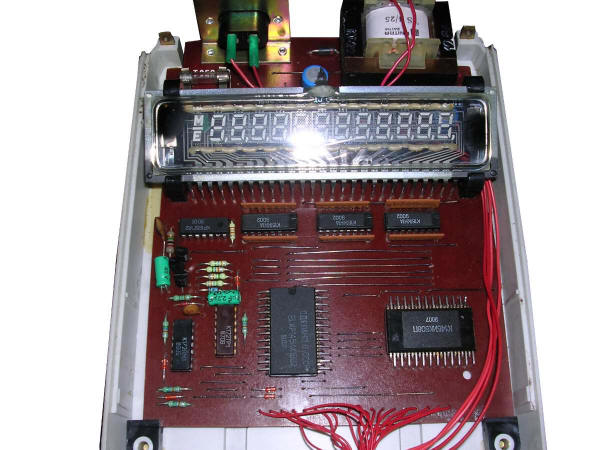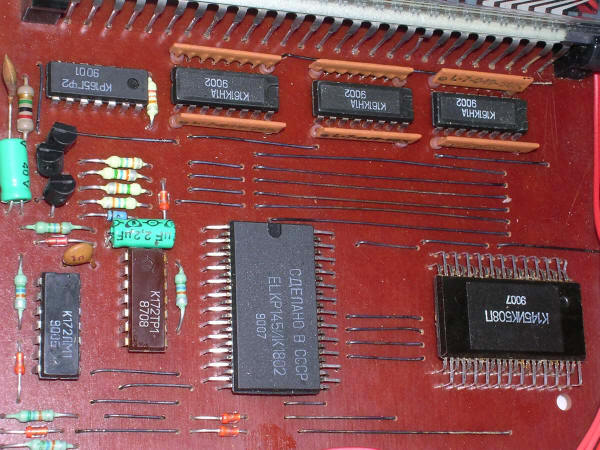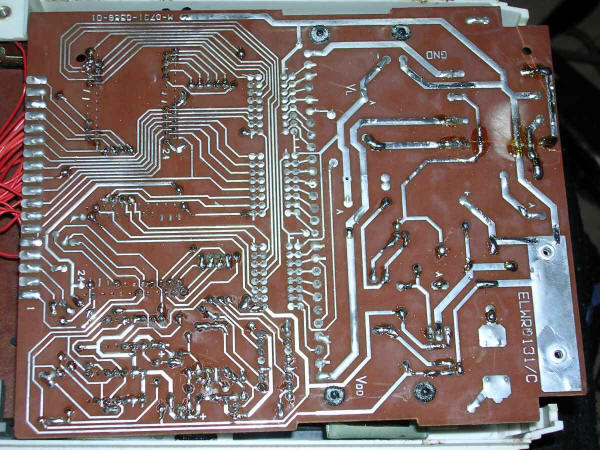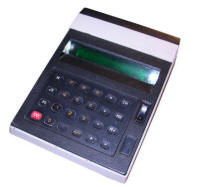Elwro Desktop calculators (2)
The purpose of this page is to show only units which I have. Units which I don't have are covered in Elwro Desktop Calculators List.
Elwro manufactured these desktop calculators since 1970s. Early units were clones (some even using genuine parts!) of Busicom Japanese calculators. From simple 4-operation devices these calculators evolved to complex, scientific and in last models even programmable calculators, using not only western, but also Polish components.
WARNING: Technical parameters are parameters of the particular unit. These calculators were made in a hard times, when western components were not easily accessible. It means that some units may have modifications to use replacement components.
| Elwro 131 | ||||||||||||||
| Type | Simple desktop | |||||||||||||
| Display: | VFD, IWL1-8/13 - 12 places + -ME | |||||||||||||
| Keyboard: | Membrane. | |||||||||||||
| Chip: | K145IK508 / K145IK1802 | |||||||||||||
| Display driver: | ICs: K161KN1A | |||||||||||||
| Additional parts: | glue logic, clock generator | |||||||||||||
| Operations: | +, -, /, *, %, 1/x, +/-, 00, totals (T), subtotals, 2 or 0 decimal places. | |||||||||||||
| Elwro 131 was another version of
famous Elwro tabletop calculators. It was built around Soviet
components, so there were more chips inside. It was manufactured
in some quantities before their most popular model 144, but last
revision 131C was made in 1989 and 1990 when Elwro made
everything which could be sold emptying their warehouses. My
unit has chips from 1990, but power supply from 1986. The calculator is a "finance mode" one with 12-digit display (which was quite useful in monetary inflation times when you had to pay 2200 zlotys for one egg :) ). |
||||||||||||||
| It has two display modes: No decimal places or
two decimal places. These modes are only for presentation,
inside computation is still done on larger precision, so numbers
with commas can be freely entered and are used with part after
comma silently processed. It is based on two main logic chips -
K145IK508 and K145IK1802. VFD was a 12-place (not including "-"
sign and not used Memory and Error signs) Soviet tube in square
glass package. It was driven by inverting K161KN1A drivers.
Contrary to Japanese and Polish chips, Soviet chipset needed an
external clock. It was made using KR165GF2 chip which allows to
generate even 100kHz. Enough for a calculator. To glue all logic
together, a K172LM1 dual N/OR gates and K172TR1 R/S Trigger
chips were used. Putting this amount of silicon into the small
casing with limited board size ended with complicated
single-sided board with lots of wires. This design has one flaw - it allows to make a sum and subtraction using totals (T key and "rhomb" key), while "equals" key only finally passes the result without any warning to user. So if you just blindly type "2+2=" expect zero. This was not like calculators in late 1980s, but 10 years earlier. Information about error is displayed not using a nice "E" sign present on VFD tube, but by lighting all 12 middle "-" signs. The quality is like all Polish electronics made in early 1990s by falling ex-national industry: Poor wires, poor PCB which literally delaminates in hands, poor soldering (yes, wave-soldering but with strange, porous alloy which needed resoldering to make the calculator work), and low-quality chips in brown packages. Summing up, very interesting calculator, much different than more popular Polish Elwro tabletop calculators. http://www.155la3.ru/k145_2.htm#k145ik508 - A quick description of K145IK508 chipset.
|
||||||||||||||
| Elwro 144 | ||||||||||||||||||||||||||||||||||||||
| Type | Simple desktop | |||||||||||||||||||||||||||||||||||||
| Display: | VFD, IW-18 | |||||||||||||||||||||||||||||||||||||
| Keyboard: | Membrane. | |||||||||||||||||||||||||||||||||||||
| Chip: | CEMI MC14007 | |||||||||||||||||||||||||||||||||||||
| Display driver: | Transistor-resistor | |||||||||||||||||||||||||||||||||||||
| Additional parts: | - | |||||||||||||||||||||||||||||||||||||
| Operations: | +, -, /, *, %, sqrt, memory, decimal places set with comma or DP key. | |||||||||||||||||||||||||||||||||||||
| Very popular calculator manufactured since early 1980s to early 1990s.Used Soviet IW-18 tube, had memory, decimal places setting by DP key or typical comma key, percents and square roots. Few years ago it was still widely used in Poland, today computer systems replaced it in offices or shops. | ||||||||||||||||||||||||||||||||||||||
| Here you can see 4 units: White unit without
prints is manufactured 1984, with black printing in 1989, brown
one in 1990. First unit uses different mainboard and is better
quality than these from 1989 and 90. Latest units used poor
paper-phenol laminate and had problems with mains transformer
falling from board or bad solders (they used less solder than
needed). Mainboard 144 Revision C uses PCB-mounted transformer
and has some minor corrections. There was also a version with a rocker switch, like older models, not sliding one. Nothing other has changed and it was probably manufactured as these switches were available, it was still marked 144. [20140310] The 4th unit (last photo) is a 144C from 1989. It has a different switch and has "1" quality mark.
|
||||||||||||||||||||||||||||||||||||||





